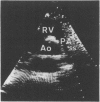Abstract
The duration of the acceleration phase of pulmonary systolic flow was measured by pulsed Doppler echocardiography in 39 normal subjects and 67 patients with heart disease to evaluate the reliability of this Doppler index as an estimate of pulmonary arterial pressure. The mean (SD) Doppler index in patients with abnormal mean pulmonary arterial pressure (greater than 15 mm Hg) was significantly shorter than that in normal subjects (110 (30) ms vs 150 (10) ms). The Doppler index was significantly related to the mean pulmonary arterial pressure (r = -0.75) the pulmonary blood flow (r = 0.46), and the total pulmonary vascular resistance (r = -0.68). Forty four of 45 patients with an abnormal index (less than or equal to 120 ms) showed abnormal mean pressure (greater than 15 mm Hg). Without exception patients with a low index (less than or equal to 90 ms) had distinct pulmonary hypertension (greater than or equal to 25 mm Hg). Twelve of 22 patients with a normal index (greater than or equal to 130 ms), however, also showed abnormal pressures. Nine of the 12 had an atrial septal defect and they had high pulmonary arterial pressure associated with high blood flow. Eighteen patients with valvar heart disease, whose mean pulmonary arterial pressure ranged from 16 mm Hg to 24 mm Hg, had a significantly shorter acceleration phase and a higher total vascular resistance than 11 patients with atrial septal defect in whom the pressure range was similar (120(20) ms vs 140 (20) ms, 3.8 (1.1) hybrid resistance unit vs 1.6 (0.5)). Thus although the acceleration time of the pulmonary systolic flow is useful for the evaluation of pulmonary hypertension, it is a complex index that is affected not only by pulmonary arterial pressure but also by pulmonary blood flow and pathological changes in the pulmonary vascular bed.
Full text
PDF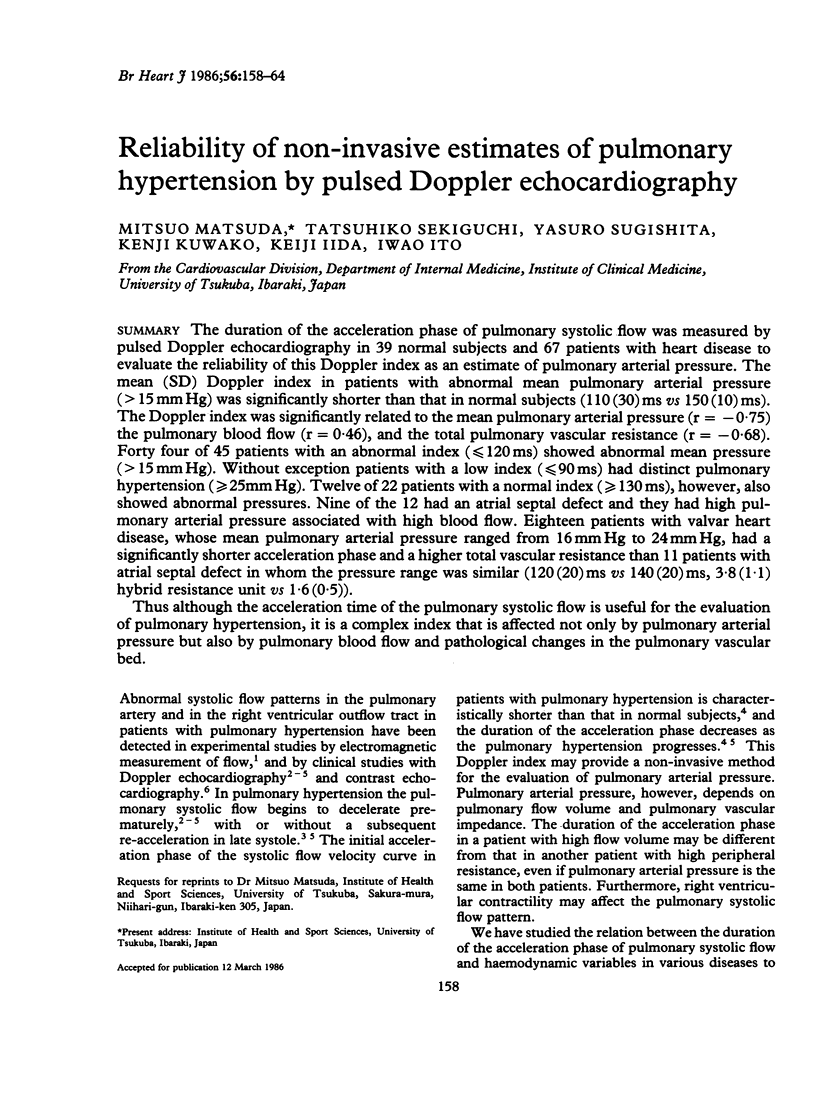
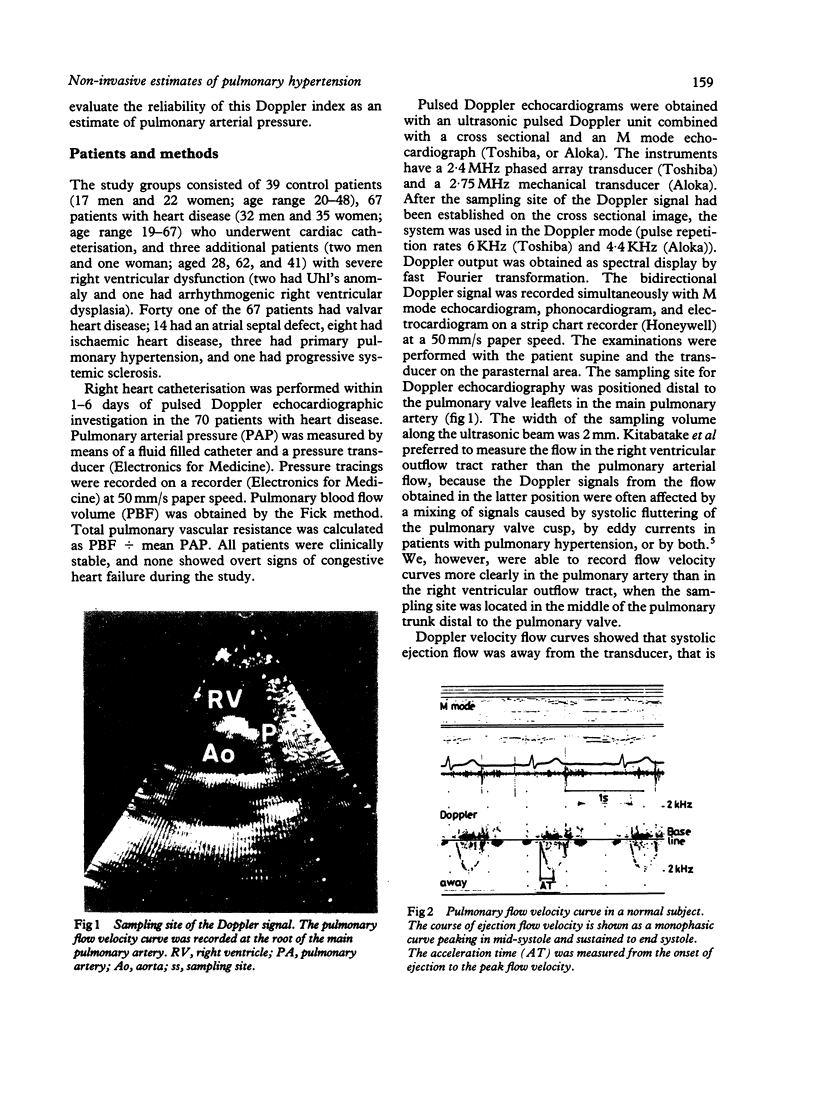
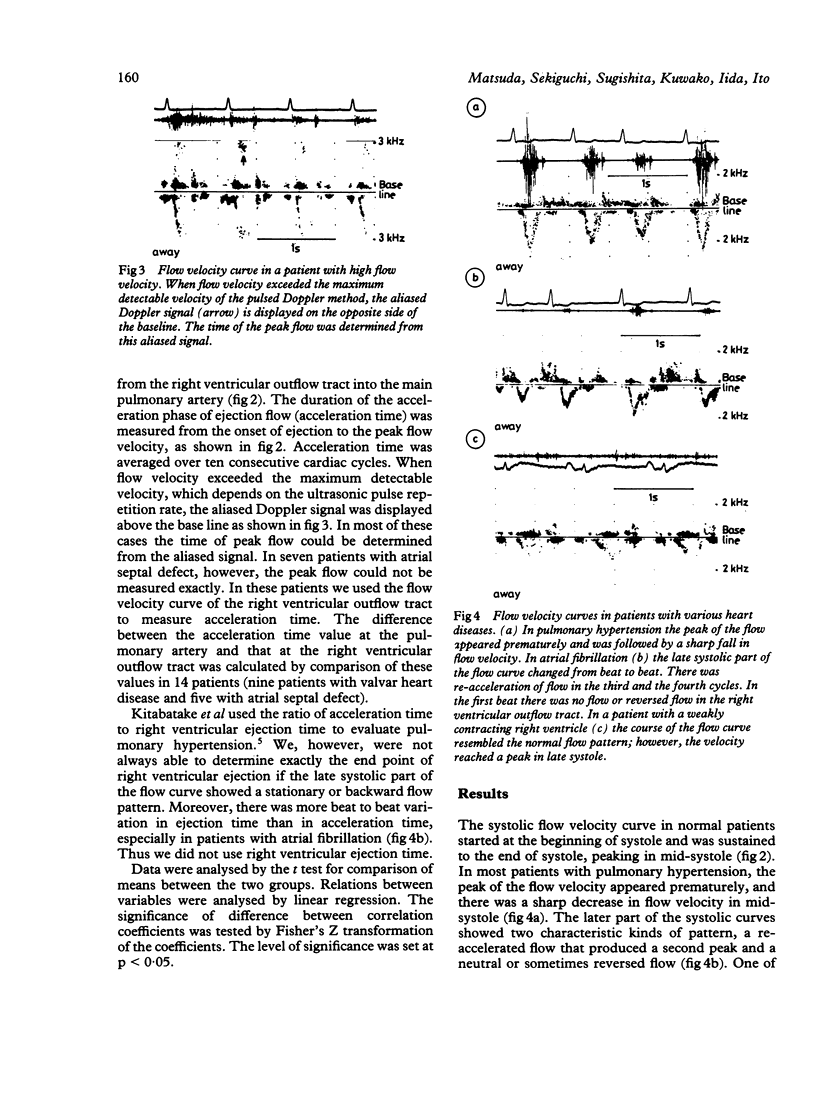
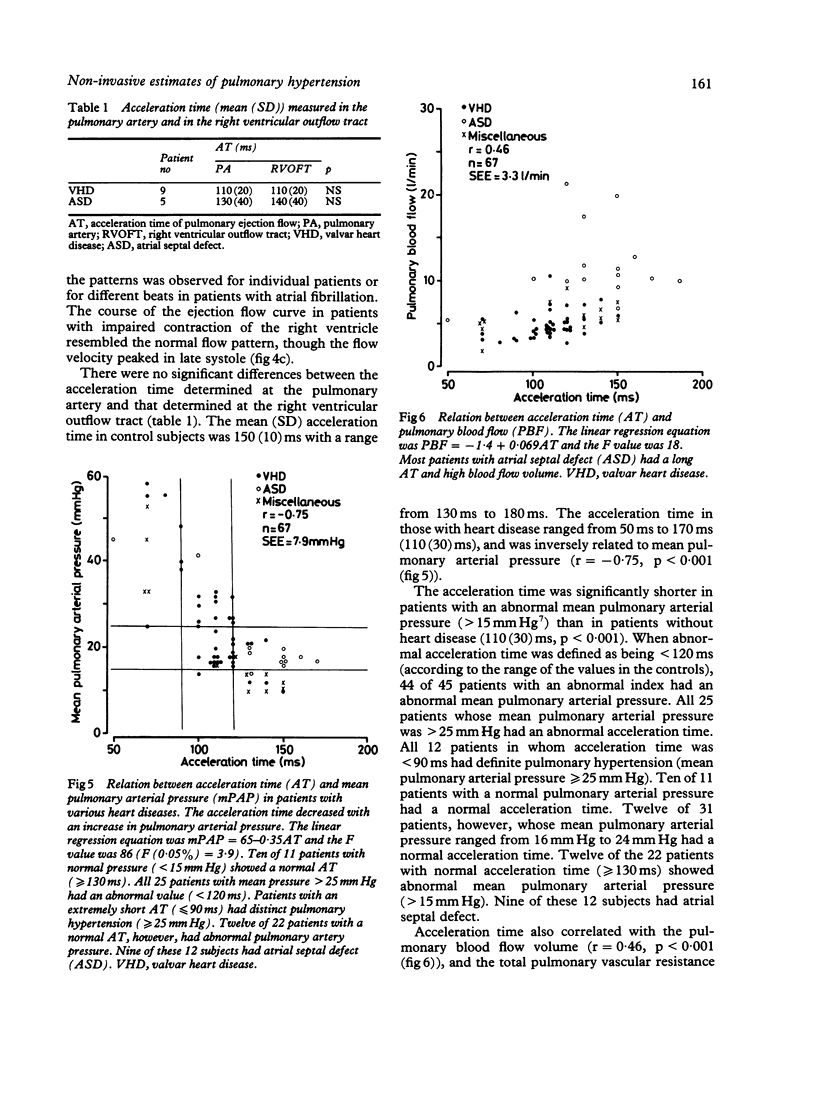
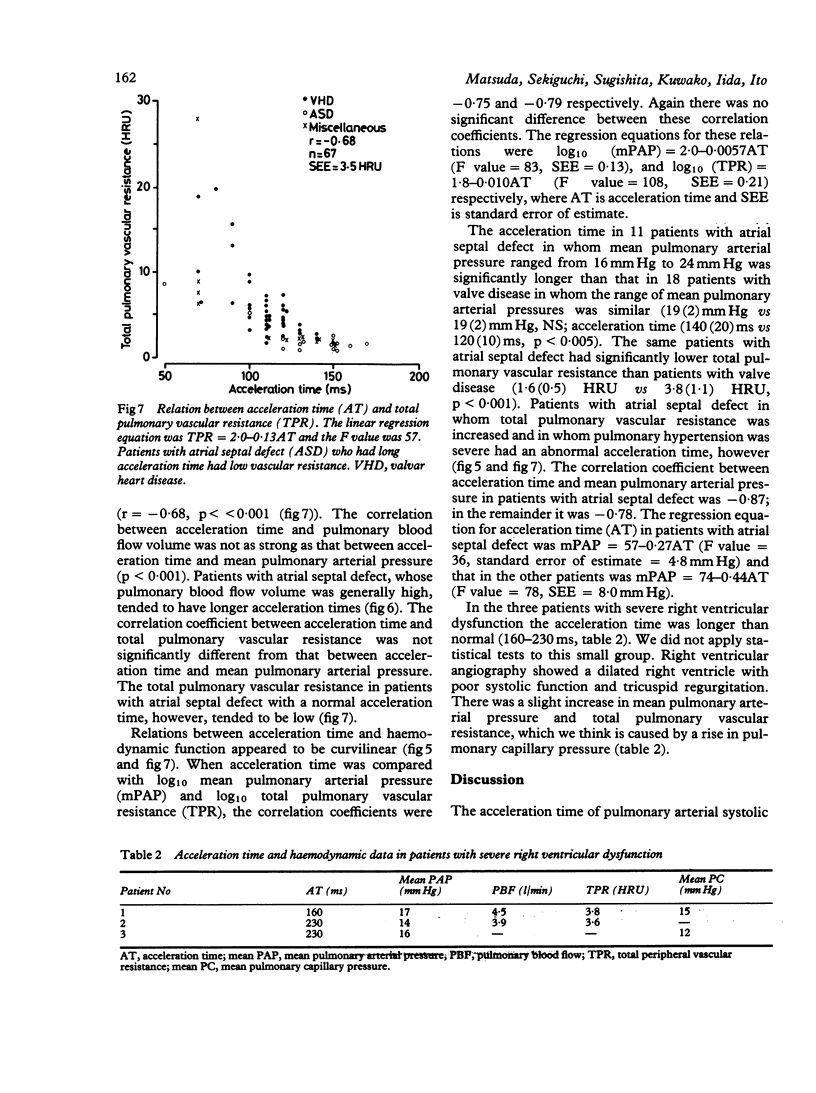
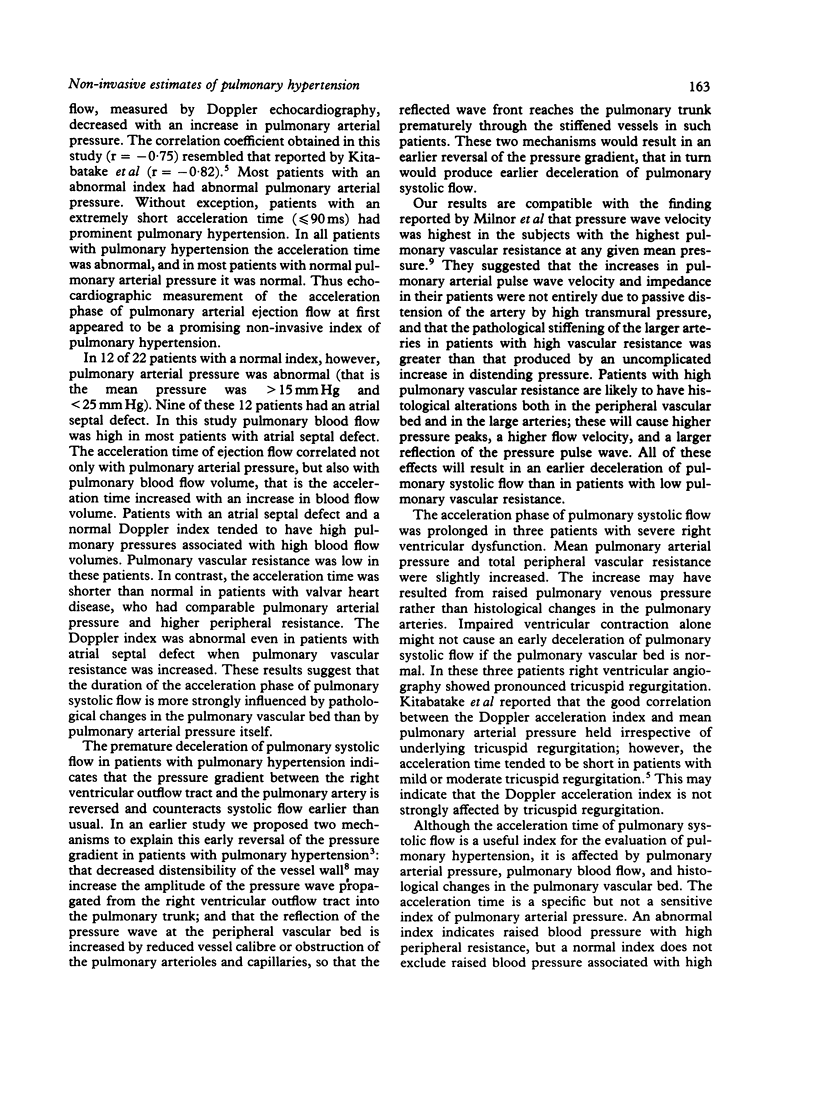
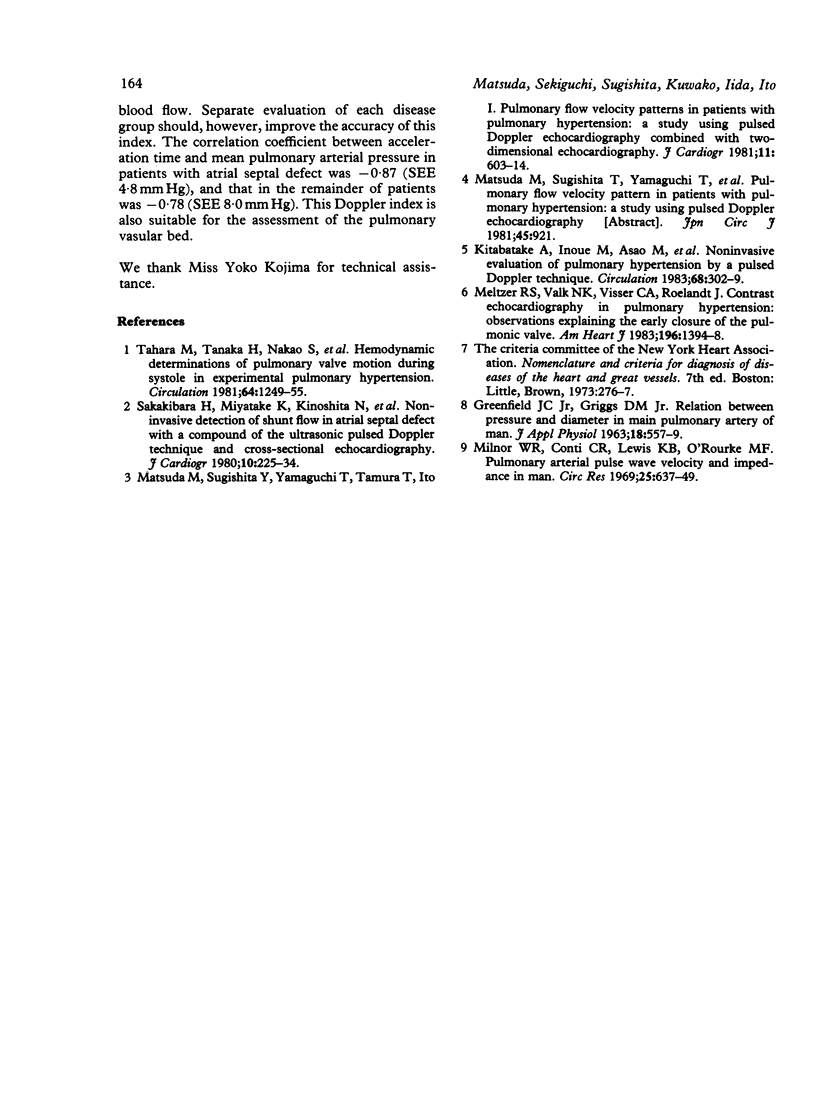
Images in this article
Selected References
These references are in PubMed. This may not be the complete list of references from this article.
- Kitabatake A., Inoue M., Asao M., Masuyama T., Tanouchi J., Morita T., Mishima M., Uematsu M., Shimazu T., Hori M. Noninvasive evaluation of pulmonary hypertension by a pulsed Doppler technique. Circulation. 1983 Aug;68(2):302–309. doi: 10.1161/01.cir.68.2.302. [DOI] [PubMed] [Google Scholar]
- Matsuda M., Sugishita Y., Yamaguchi T., Tamura T., Ito I. [Pulmonary flow velocity patterns in patients with pulmonary hypertension: a study using pulsed Doppler echocardiography combined with two-dimensional echocardiography (author's transl)]. J Cardiogr. 1981 Jun;11(2):603–614. [PubMed] [Google Scholar]
- Meltzer R. S., Valk N. K., ten Cate F., Visser C. A., Roelandt J. Contrast echocardiography in pulmonary hypertension: observations explaining the early closure of the pulmonic valve. Am Heart J. 1983 Dec;106(6):1394–1398. doi: 10.1016/0002-8703(83)90051-0. [DOI] [PubMed] [Google Scholar]
- Milnor W. R., Conti C. R., Lewis K. B., O'Rourke M. F. Pulmonary arterial pulse wave velocity and impedance in man. Circ Res. 1969 Dec;25(6):637–649. doi: 10.1161/01.res.25.6.637. [DOI] [PubMed] [Google Scholar]
- Tahara M., Tanaka H., Nakao S., Yoshimura H., Sakurai S., Tei C., Kashima T. Hemodynamic determinants of pulmonary valve motion during systole in experimental pulmonary hypertension. Circulation. 1981 Dec;64(6):1249–1255. doi: 10.1161/01.cir.64.6.1249. [DOI] [PubMed] [Google Scholar]



